gziped postscript version
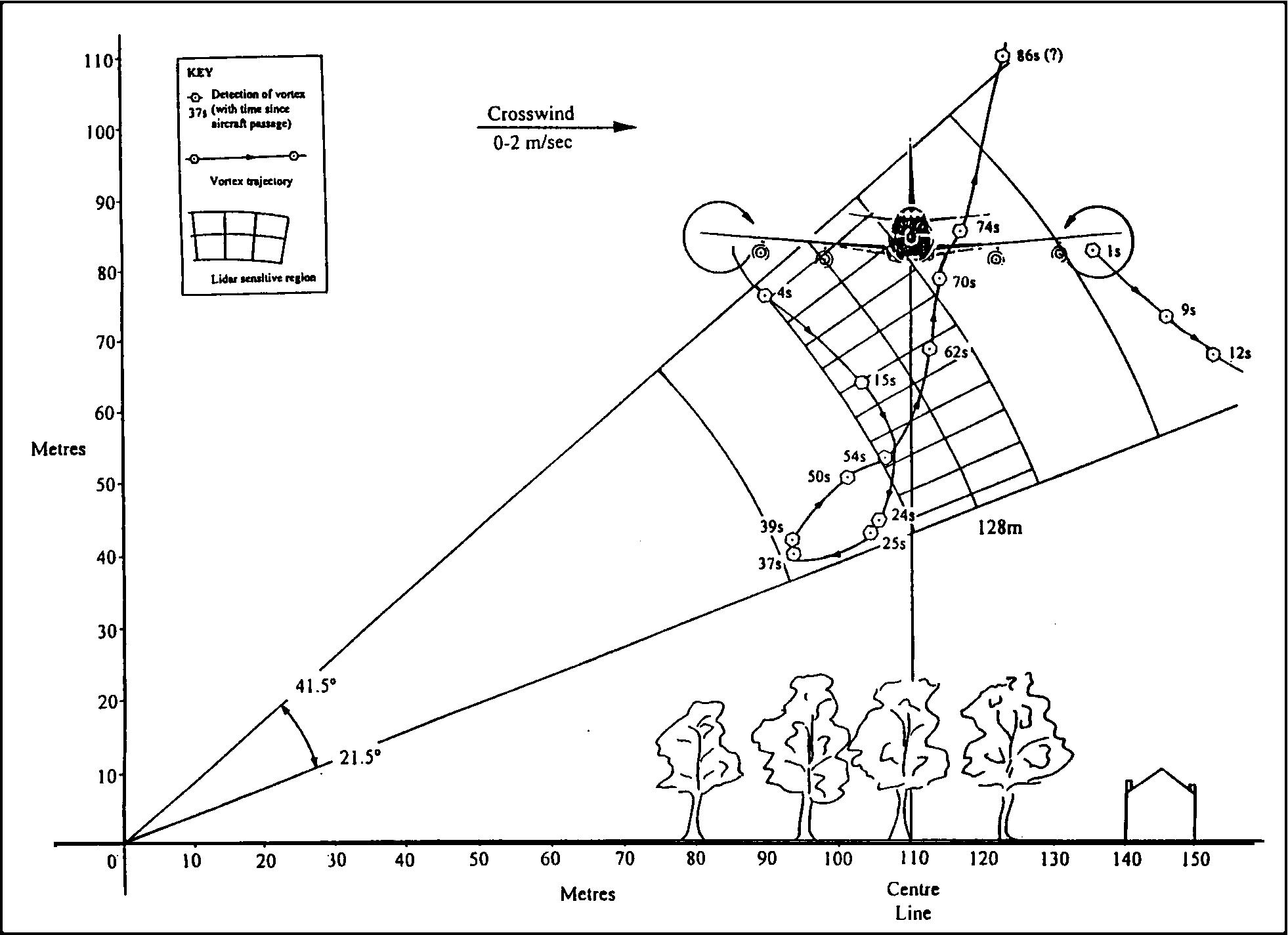
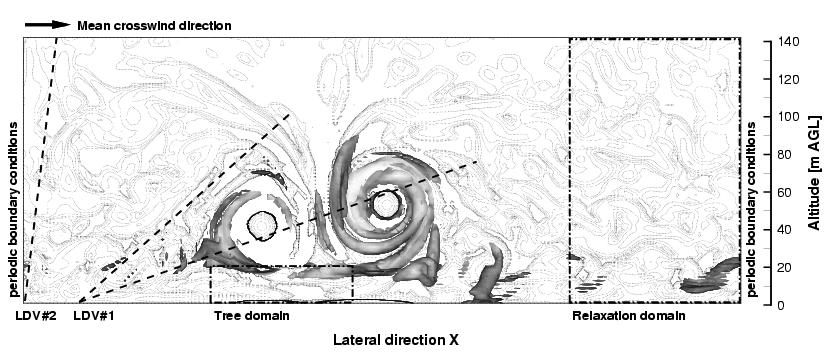
Wake Vortex Behaviour in the Sheared Boundary Layer |
last modified April 2002, Thomas Hofbauer
CONTENT
Vortex Decay in Constant shear ; [gif-version]
[mpg-version]
Aircraft
Wake Vortices - The Heathrow-Rebound Case [link]
Shear-Layer
Effects on the Dynamics of a Counter-Rotating Vortex Pair [link]
Effects
of nonlinear Shear on the Dynamics of a Counter-Rotating Vortex Pair [link]
The Heathrow-Rebound Case
| Abstract download |
pdf
version gziped postscript version |
| Selected Figures | |

|
Reconstruction of vortex trajectories from measured LDV data of a Boeing B747-200 in terminal approach. |
 |
Isolines/isosurfaces of lambda_2 (measure for coherent
vortex structures) at t=19s after vortex injection of a preliminary DNS.
At this stage, the upwind vortex almost reached its lowest altitude and is
just about to reverse its lateral movement direction, forming the
characteristic loop of the trajectory. |
| Animation | mpeg version (2 MB) |
Abstract
The influence of three-dimensional wind-shear
layers (jets) on the transport and decay of a counter-rotating vortex pair is
investigated by means of direct numerical simulation. A laminar case is
considered where the jet width varies periodically along the vortex axis.
Further, the impact of two turbulence levels in the jet upon the vortex pair is
studied. The initially laminar vortex pair penetrates from above into the jet
and towards the ground. When penetrating into the laminar jet the wake vortices
experience a sinusoidal perturbation but do not link. Contrarily, mutually
independent dissolution of each vortex is observed when the jet is turbulent.
The upstream vortex with vorticity opposing the vorticity of the upper shear
layer of the jet starts to erode when it touches the upper flank of the
turbulent jet, whereas the downstream vortex remains unaffected until it
interacts with the lower shear layer below the jet maximum. The vortex breakdown
process and its spatial structure is discussed in detail.
| Full paper download |
pdf
version (1.1 MB!) gziped postscript version (1.2 MB!) |
| Animation | |
 |
Interaction of wake vortices with a turbulent
low-level jet animated gif version (2 MB) mpeg version (0.2 MB) |
| Selected figures
(Click on Thumbnail to get a larger view) |
|
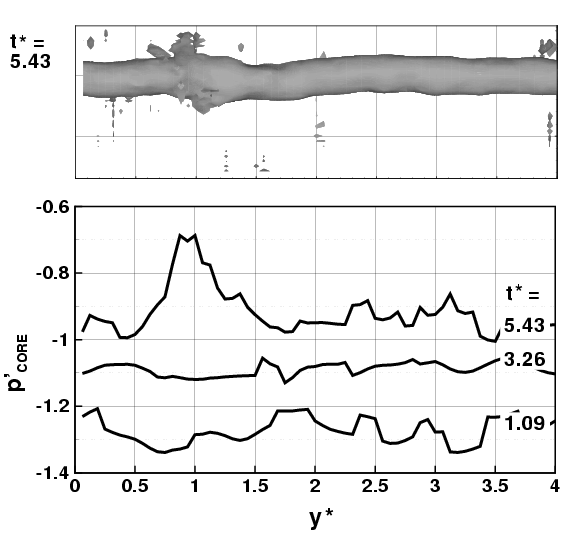 |
Dynamic pressure deviation p'c at
the center of the upstream vortex vs. axial coordinate. The values are an
average over 3x3 cells surrounding the local minimum of lambda2.
see full paper for more details. |
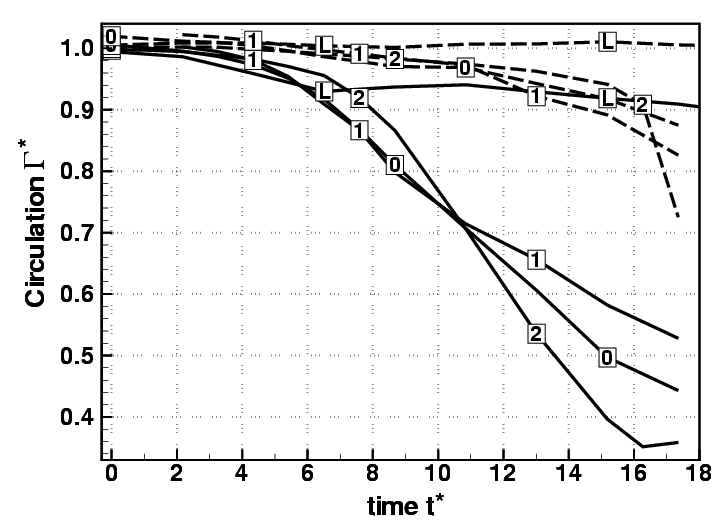 |
Time series of circulation
obtained at 3 times the core radius and averaged over axial direction.
see full paper for more details. |
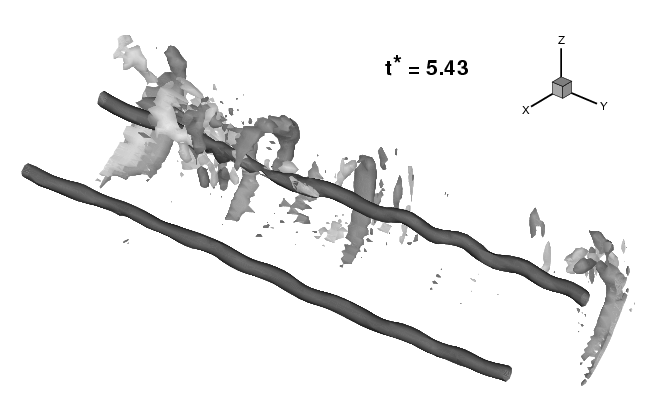 |
Azimuthal structures and
short-wave perturbations in case T0. Isosurfaces of azimuthal vorticity
(dark) and +6.9 (light) and of lambda2=-77.6 with respect to upwind vortex
location.
see full paper for more details. |
Abstract
Numerical simulations were conducted to
investigate the influence of nonlinear vertical shear on the trajectories of a
trailing vortex pair. Descending vortices which approach a shear layer begin to
tilt and diverge. It is shown that the vortex whose vorticity is of opposite
sign to the shear-layer vorticity can stall or even rebound, whereas the other
vortex penetrates through the shear layer. The behaviour of the vortices is
highly sensitive to the vorticity distribution within the shear layer and cannot
be described by circulation or maximum vorticity relations. When the vorticity
distribution of the shear layer varies along the axis of the vortices, the
interaction between shear and vortex is also modified in axial direction and
presumably triggers a quickly growing instability of the vortex pair.
| Full abstract download |
pdf
version (3.6 MB!) gziped postscript version (2.5 MB!) | |||||||
| Selected
figures |
(Click on Thumbnail to get a larger view)  see full abstract  see full abstract 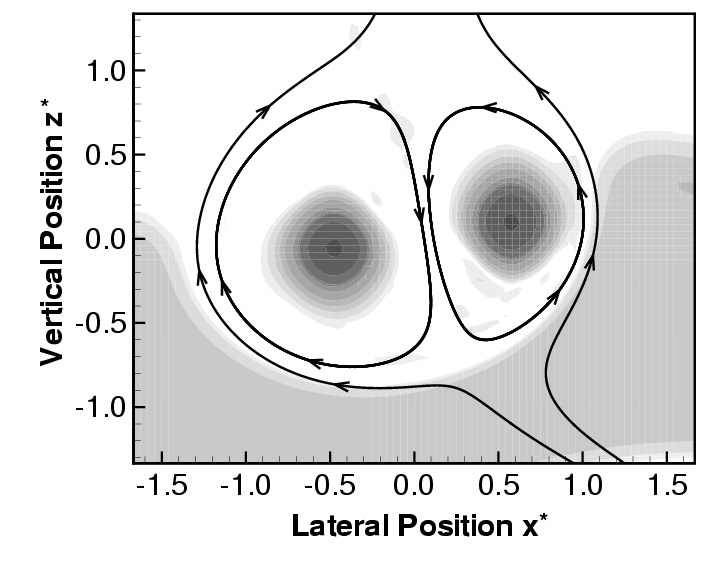 see full abstract |